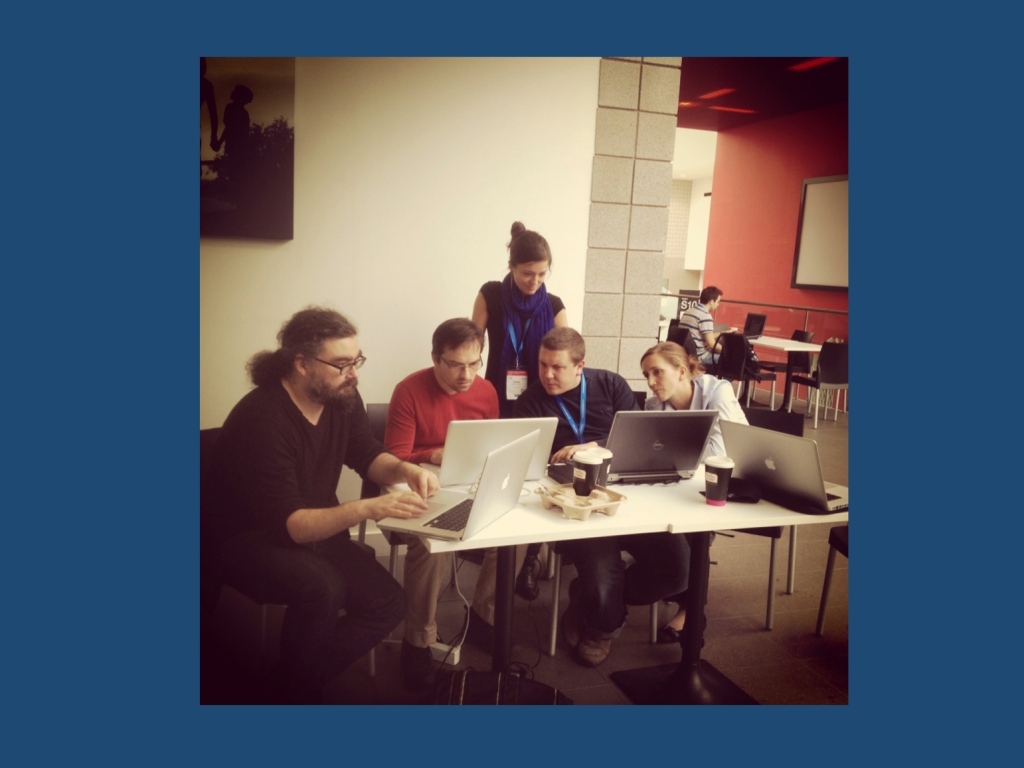The Shard. London has changed quite a bit since my last visit and I didn’t really pay that much attention to the Olympics, I must admit. Both became clear to me when I left the train at London Bridge Station. There it stood in front of me: The Shard. London’s new high-rise building, the tallest skyscraper in the European Union. And I had no idea that it even existed. On a smaller scale, there were also a few surprises for me at the ECE in the world of epilepsy genetics.
Sessions and posters. There were several platform and poster sessions at the ECE and I would like to point out my favourites. Again, this is a very subjective selection and I apologize for not including more posters on this shortlist.

Tower Bridge at night. There were some dry, not too cold nights during the time of the ECE that allowed for a leisurely stroll along the River Thames. Some people have commented that this photo is a little kitschy. However, I was actually quite proud how it turned out.
Whole-exome sequencing in a family with IGE. McCormack et al. presented a poster on an IGE family, which was investigated with exome sequencing in 3 individuals, revealing GLUT1 (SLC2A1) as a probable candidate gene. I liked this poster because of the straight-forward nature of the analysis and because of the questions it raises: First, there are two possible variants in SLC2A1 that might be candidates for epilepsy that are currently under analysis for population frequency. Secondly, it points out the role of exome sequencing in identifying second-tier candidate genes. SLC2A1 is a gene reported in IGE, but not really the prime gene that somebody would go for. Therefore, this is a nice example of exome sequencing as an explorative tool for candidate genes.
17q12 microduplications in GEFS+. Just when you think that there is nothing new anymore about the GEFS+ story (Genetic Epilepsy with Febrile Seizures Plus), Hardies et al. present a poster on an inherited microduplication at 17q12 in a family with GEFS+ and Intellectual Disability. This is interesting for at least two reasons. First, GEFS+ expands beyond the realm of ion channel disorders with this finding. Secondly, structural genomic variants rarely cause familial, monogenic disease.
KCTD7 mutations in opsoclonus-myoclonus syndrome. Blumkin and colleagues reported on a patient with opsoclonus-myoclonus syndrome with a compound heterozygous mutation in KCTD7. KCTD7 mutations are a known cause of progressive myoclonus epilepsy and this case expands the known phenotypic spectrum.
TNK2 mutations in epileptic encephalopathies. Depond et al. identify homozygous mutations in TNK2 in a family with three affected siblings suffering from severe infantile-onset epilepsy. The authors identified TNK2 mutations as the causative gene. TNK2 is brain-expressed tyrosine kinase that has not been shown to be involved in epilepsy before.
Familial movement-induced reflex epilepsy (FMIRE) and linkage to 1p. Schirwani and Crompton present clinical and linkage data on two siblings with a novel familial phenotype consisting of movement-induced reflex epilepsy. This peculiar phenotype links to chromosome 1p and the gene is as yet unknown. It will be interesting to see which functional pathways are causative for this reflex/epilepsy phenotype once the gene is identified.
STXBP1 mutations as a cause of Dravet Syndrome. Our understanding of the STXBP1 gene has undergone a remarkable transition. Initially thought to be specific for Ohtahara Syndrome, mutations were also found in other infantile epileptic encephalopathies and now in two patients with SCN1A-negative Dravet Syndrome, as presented by Weckhuysen et al. It will be interesting to see what the full phenotypic spectrum of this gene is.
New genetics – always read the instructions. I gave a presentation in the New Genetics Session on Wednesday afternoon that will be the topic of a future post. Briefly, I have tried to paint a human picture of next generation technology, talking about the hopes, expectations and disappointments in the era of “omics” technology, relating to both patients and caregivers.
The Exome Hacking League @ ECE. The ECE went by fast. Several EuroEPINOMICS researchers approached us during this meeting wondering why we didn’t have a general assembly during the ECE. As mentioned in an earlier post, the timing was a little bad for this. On the one hand, we just met in Luxembourg a few months ago. On the other hand, we are still busy sifting through the exome data that we already have. On Tuesday Oct 2nd, you might have noticed a brief power outage at the meeting centre at around 11AM. This is when we plugged in the official platinum-sealed EuroEPINOMICS-RES exome harddrive to look at the current analysis of the existing data. Bystanders might have mistaken this as a nerdy gaming convention, but the upper level of the ExCel pizza restaurant was a completely functional bioinformatics lab. We chose this location as it seemed to be the only place at the ExCel Centre with a functional power plug.

The Exome Hacking League 2012. The upper level of the ExCel pizza restaurant was exome central on Oct 2nd, 2012. We apologise for any inconvenience if you accidentally slipped on a few base pairs that fell down the balcony. (from left to right: Patrick May, Roland Krause, Sarah Weckhuysen, Arvid Suls, Johanna Jähn)
Things to come. Even though the ECE is over, EuroEPINOMICS RES is still working in high gear. Please watch out for the announcement of upcoming teleconferences or webconferences for the Family Genome Sequencing Project (next two weeks) and for the RES Intermediate Results (early November), where we will discuss the first analysis of our RES trios and will launch the “exome fund” to facilitate additional sequencing capacities at the Sanger Centre.



